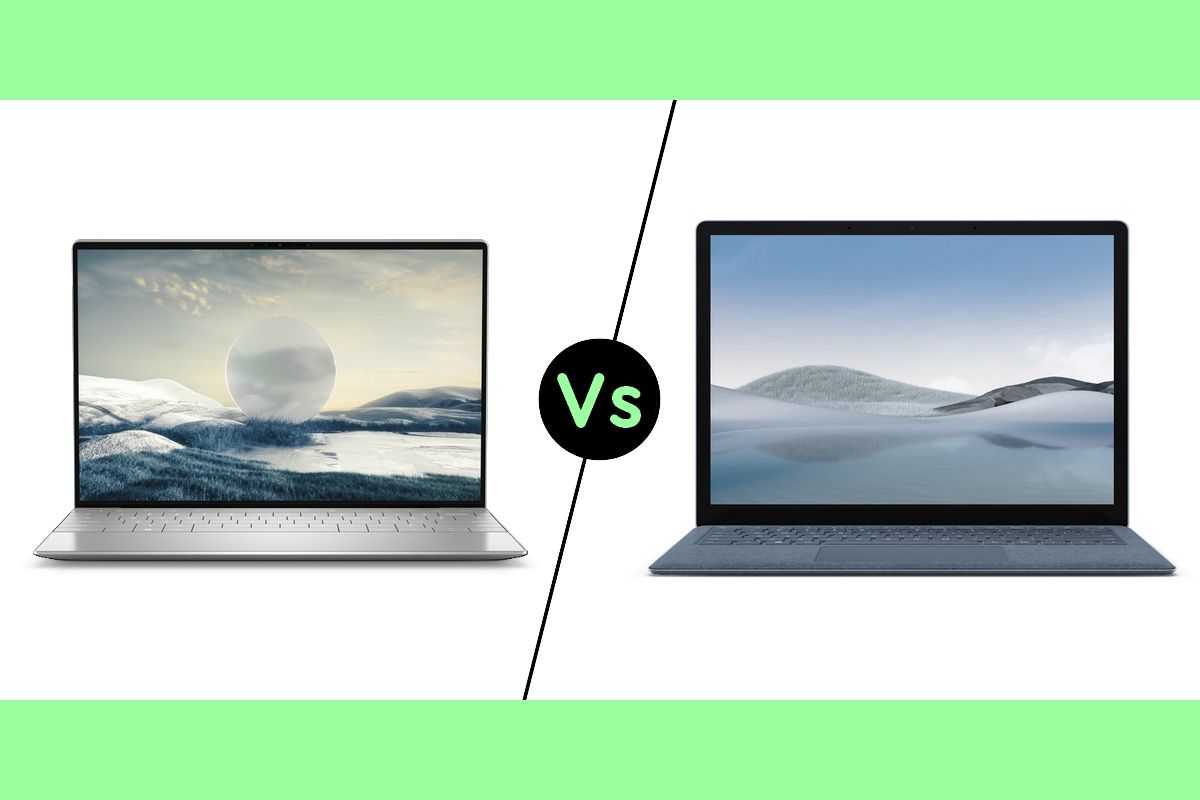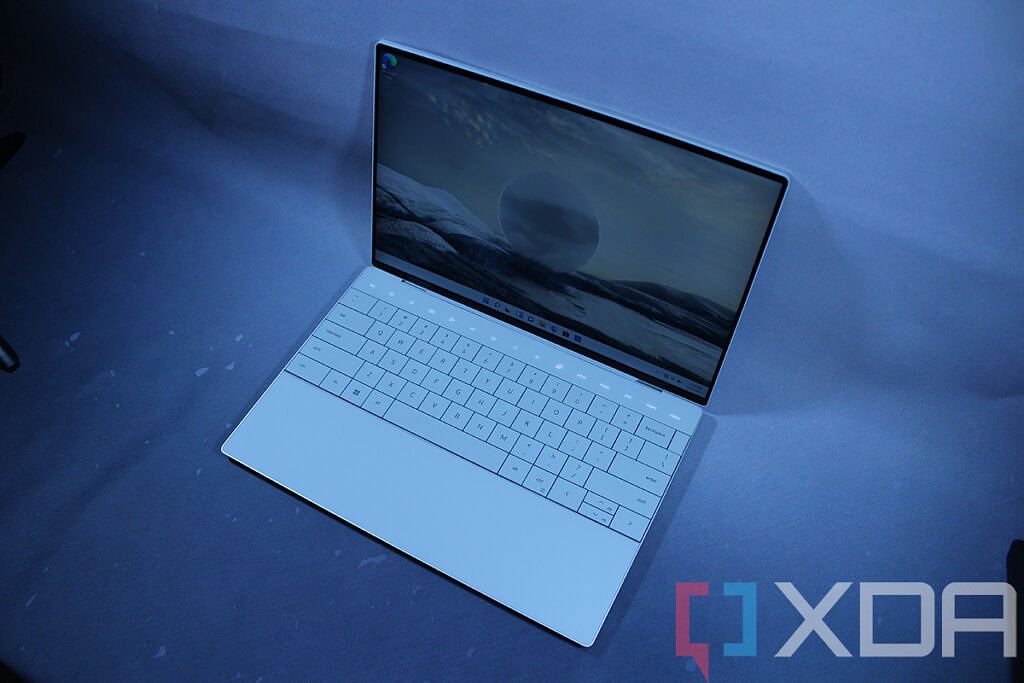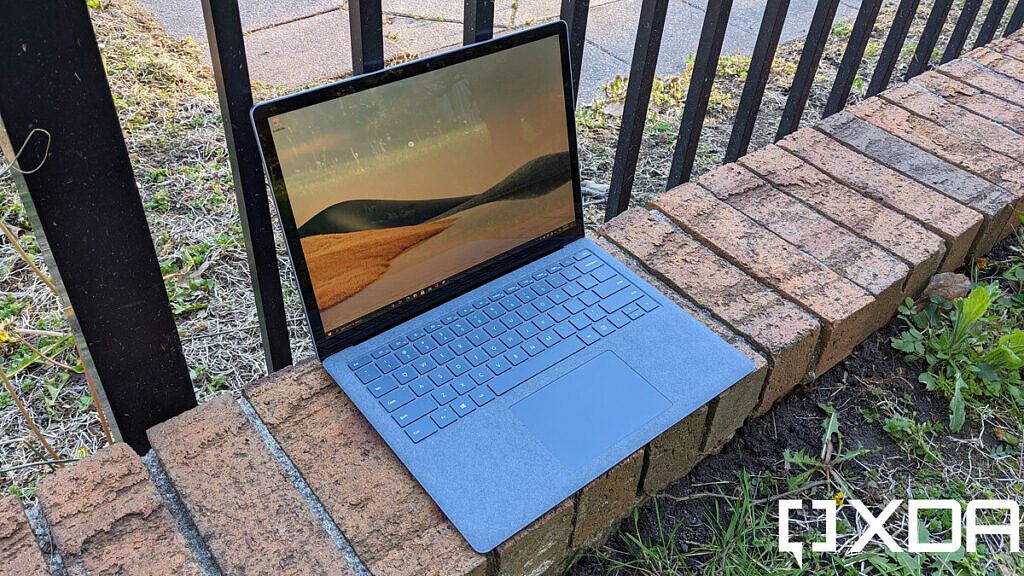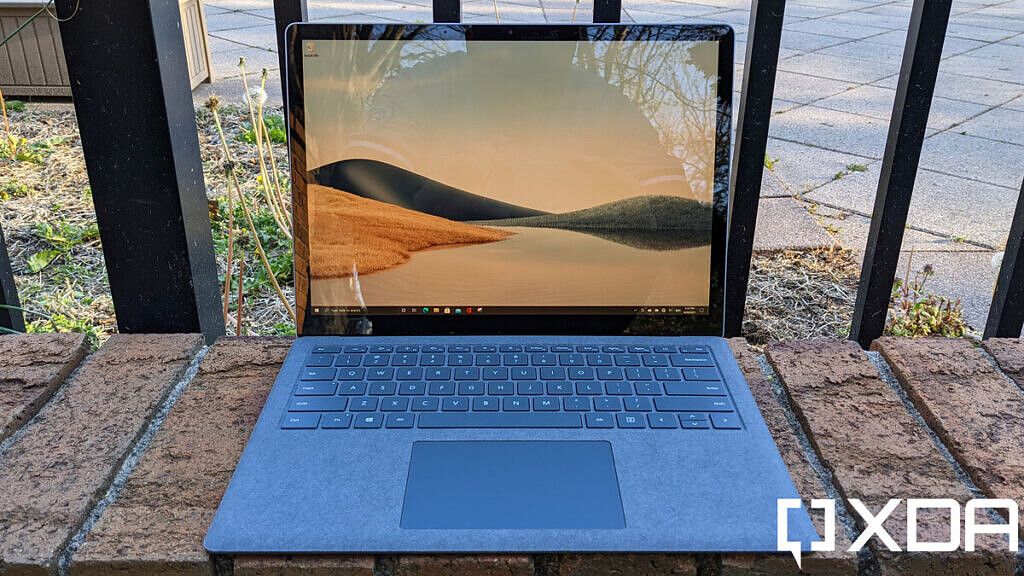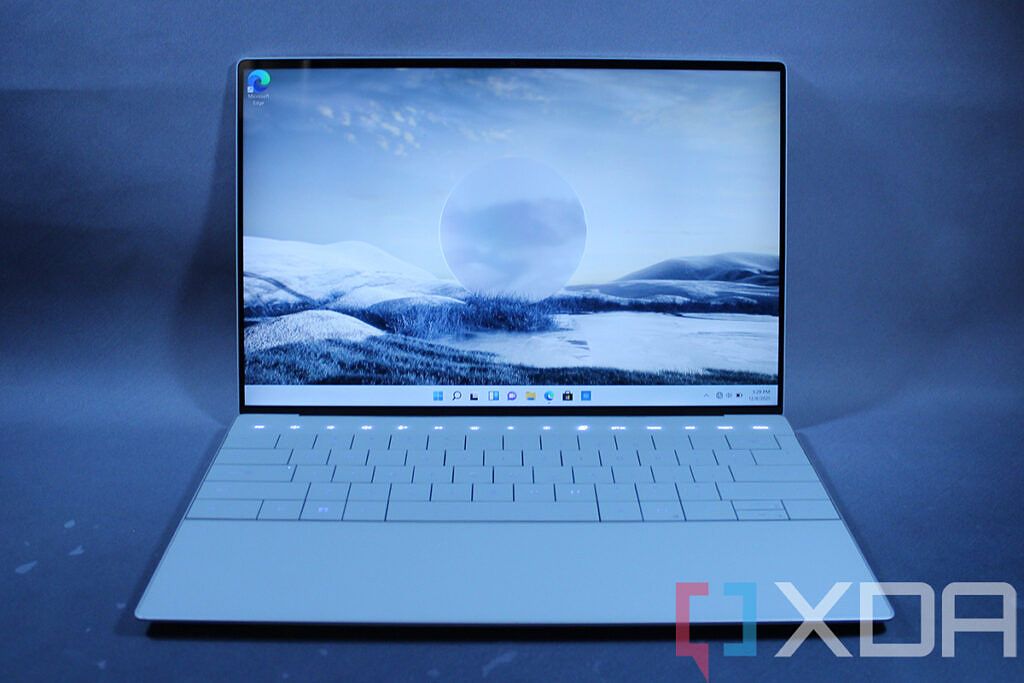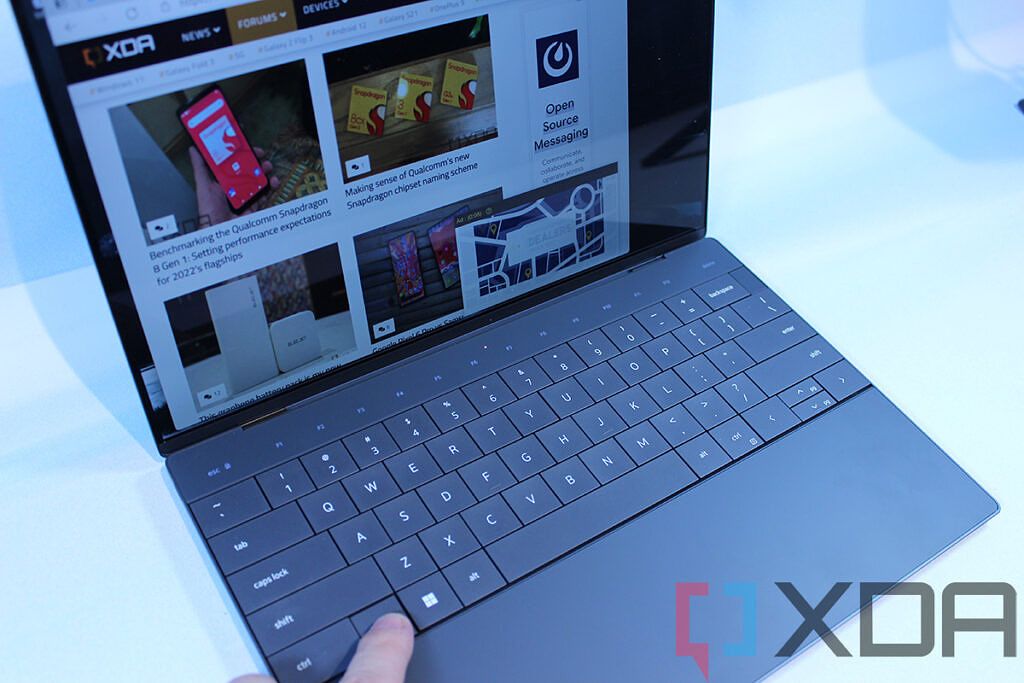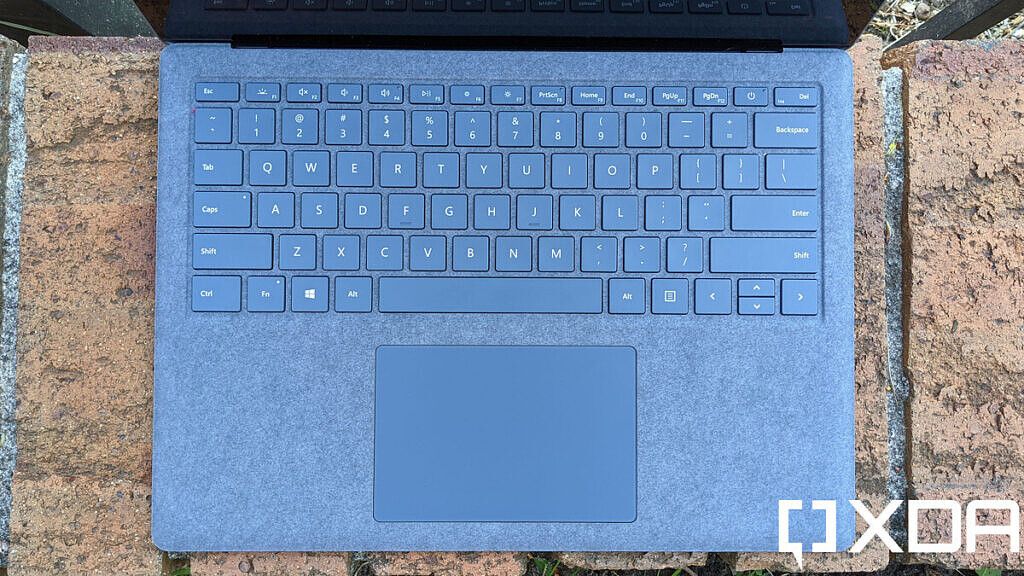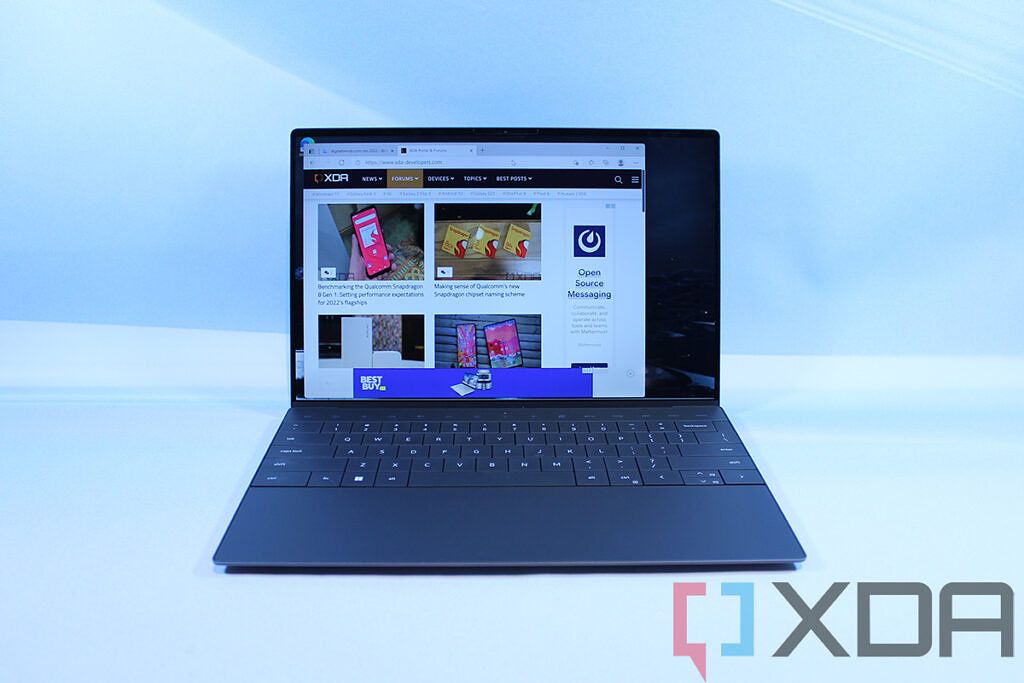At CES 2022, Dell introduced a fresh take on its popular XPS 13 laptop, the XPS 13 Plus. Featuring a brand-new design that looks incredibly modern and futuristic, the Dell XPS 13 Plus is a promising device, but how does it compare to another sleek and modern laptop like the Surface Laptop 4? The XPS 13 was already one of Dell's best laptops, and with the Surface Laptop 4 also being a great Surface PC, this is an interesting match-up.
Right off the bat, the XPS 13 Plus has an advantage simply because it was announced very recently, and it comes with 12th-generation Intel processors. Because of that, it's naturally going to be faster than the Surface Laptop 4, which is still using 11th-generation processors. Aside from that, these laptops have a lot in common, so let's take a look at what you should consider before buying one.
Navigate this article:
Specs
|
Dell XPS 13 Plus (9320) |
Surface Laptop 4 |
|
|---|---|---|
|
Operating system |
|
|
|
CPU |
|
|
|
Graphics |
|
|
|
Display |
|
|
|
Storage |
|
|
|
RAM |
|
|
|
Battery |
|
|
|
Ports |
|
|
|
Audio |
|
|
|
Camera |
|
|
|
Windows Hello |
|
|
|
Connectivity |
|
|
|
Color |
|
13.5-inch:
15-inch:
|
|
Size (WxDxH) |
|
|
|
Weight |
|
|
|
Price |
Starting at $1,299 |
Starting at $899 |
Right away, you can tell a few differences, but also a few similarities between these two laptops. The biggest difference is that the Surface Laptop 4 comes in two sizes, but there aren't many differences between the models. We'll focus on the 13.5-inch variant, since it's the most direct competitor with the XPS 13 Plus.
Performance: The Dell XPS 13 Plus has Intel Alder Lake processors
As we've already mentioned, the Dell XP 13 Plus comes bearing Intel's latest and greatest processors from the Alder Lake series. These processors use a brand-new hybrid architecture, mixing high-performance cores with efficient cores in the same package. This results in a much higher core count and higher overall performance, though we don't yet have measurements to compare the two. The processors inside the XPS 13 Plus also come from the new P-series family, and they have a 28W TDP, while previous Intel models only came in 15W variants (for Windows laptops, at least). That gives this laptop an even bigger advantage here.
The Surface Laptop 4 still has premium processors, they're just least year's models. They have fewer cores overall, even on the AMD models, and performance should be lower as a result. Both Intel and AMD processors have a 15W power rating, too, so that also gives the XPS 13 Plus a performance advantage. Benchmark results for the 12th-generation Intel processors, but you can look at the table below to get an idea of how much faster the Dell XPS 13 Plus will end up being.
|
Intel Core i7-1280P(see test) |
Intel Core i7-1185G7(average) |
AMD Ryzen 7 4980U(see test) |
Intel Core i5-1240P(see test) |
Intel Core i5-1135G7(average) |
AMD Ryzen 5 4680U(see test) |
|
|---|---|---|---|---|---|---|
|
Geekbench 5 (single/multi-core) |
1,417 / 9,991 |
1,396 / 4,837 |
1,164 / 6,191 |
1,205 / 7,676 |
1,240 / 4,164 |
1,045 / 5,432 |
As for graphics performance, things shouldn't be too different. Intel hasn't discussed the Iris Xe graphics inside its 12th-generation processors, so it's fair to assume it hasn't changed drastically. Both 11th-generation and 12th-generation processors have integrated graphics with 96 execution units, so the difference shouldn't be major.
The Dell XPS 13 Plus has LPDDR5 RAM and PCIe 4.0 SSDs.
Another benefit of the 12th-generation Intel processors is the newly-added support for LPDDR5 RAM, which should be noticeably faster than LPDDR4x, especially in the long run as developers start taking advantage of it. The Dell XPS 13 Plus also comes with PCIe 4.0 SSDs, resulting in even faster speeds and lower latency.
As for battery life, the Dell XPS 13 Plus has a noticeably larger battery, but we don't yet know how the new Intel processors will affect battery life. However, with a higher 28W TDP, it's bound to chew through its battery more quickly than the 15W processors inside the Surface Laptop 4.
Display and sound: Two great screens, but the Dell XPS 13 Plus is better
In terms of the display, both the Surface Laptop 4 and Dell XPS 13 Plus are bound to give you a great experience, though it will depend on the configuration you choose. The Surface Laptop 4 offers a consistent experience across the board. It's a 13.5-inch display with a 3:2 aspect ratio and 2256 x 1504 resolution. That's pretty sharp for a display of this size, and it comes with touch and pen support, too. Microsoft's Surface devices typically have great screens, so you'll be just fine here.
On the other hand, the Dell XPS 13 Plus has a 13.4-inch display, which comes in a slightly wider 16:10 aspect ratio. There are a few configurations available, however. The base model comes with a Full HD+ (1920 x 1200) display - which is still fairly sharp for this size - and no support for touch. You can add touch support, though. Most importantly, you can also opt for one of the two high-end upgrades: a 3.5K (3456 x 2160) OLED display or an Ultra HD+ (3840 x 2400) IPS panel, both of which easily outclass the Surface Laptop 4. Of course, you'll likely have to pay a pretty penny for those upgrades, but if you want the very best display experience, the XPS 13 Plus has it.
While there are some differences with the display, the Surface Laptop 4 and Dell XPS 13 Plus have comparable webcams. Both laptops have a 720p HD camera, and both include support for Windows Hello. With this model, Dell separated the infrared camera from the webcam itself, which should result in better quality than we've seen with previous XPS laptops. The Surface Laptop 4 has typically had one of the better 720p cameras, too, so it balances out.
Both laptops have a 720p HD camera and Windows Hello support.
As for sound, the Dell XPS 13 Plus pulls off another convincing victory. It comes with a quad-speaker stereo setup with up to 8W of total output, something you don't see too often in laptops of this size. This should give you a very immersive experience. Meanwhile, the Surface Laptop 4 has a dual-speaker setup, and the speakers are under the keyboard, firing directly at you. Having top-firing speakers is an advantage for the Surface Laptop 4, but you'll probably still enjoy the Dell XPS 13 Plus a bit more.
Design and ports: Both laptops look sleek and modern
Design is the area where the Dell XPS 13 Plus and Surface Laptop 4 probably have the most in common. They look quite different from each other, but they're both very modern-looking laptops with a minimalist aesthetic overall. With that said, the Dell XPS 13 Plus definitely looks more futuristic.
For one thing, it has no touchpad, or at least not one that you can see. Dell has made the touchpad completely seamless with the chassis of the XPS 13 Plus, so you can't see it or click it. Instead, it uses haptic feedback to simulate clicks. Another futuristic element of the XPS 13 Plus is the function row, which no longer has physical keys. A benefit of this is that instead of seeing the function number and media control label at the same time, the laptop can change what it shows. This way, you always know what the button will do just by looking at it. Meanwhile, the rest of the keyboard has larger keys with no spacing between them, and it stretches to the edges of the laptop, contributing to its sleek look.
The Surface Laptop 4 also has a minimist aesthetic with clean lines and premium design, but it's a bit more traditional. It has a typical keyboard with some space between each key, a classic function row, and a clickable touchpad. One thing that's remarkably different is that the Surface Laptop 4 gives you the option to get an Alcantara-covered base. This is a type of premium fabric that's soft to the touch, so it's more comfortable and warmer than a cold metal surface. It's fair to say both look very clean and modern, and you might actually prefer the Surface Laptop 4 if you're worried you won't get used to the invisible touchpad or digital function keys of the XPS 13 Plus.
If you're worried about portability, the Dell XPS 13 Plus is also better. While the displays are almost the same size, the Dell XPS 13 Plus is not as wide or tall as the Surface Laptop 4, so it's bound to fit more easily in a bag or backpack. Both laptops are relatively light (though the XPS 13 Plus is slightly lighter), but the Surface Laptop 4 is thinner. These differences are minor, and you're more likely to notice the width and height, where the XPS 13 Plus is markedly more portable.
The Dell XPS 13 Plus only has Thunderbolt, and the Surface Laptop 4 doesn't have it at all.
Both laptops also suffer from a limited port setup, but they do it in different ways. The Dell XPS 13 Plus only has two Thunderbolt 4 ports, and it includes a USB Type-C to Type-A adapter in the box. That means if you want to connect any wired peripherals, you'll probably need a Thunderbolt dock, but at least Thunderbolt is a very capable connection.
The Surface Laptop 4 covers more basics, featuring one USB Type-C one USB Type-A ports built-in, along with a headphone jack and a Surface Connect port. However, you're still missing a typical display output, and with this laptop, you don't even get Thunderbolt 4 support for docking. The only dock you can use is the Surface Dock, which is likely more expensive and harder to find. We've seen Microsoft adopt Thunderbolt in the Surface Pro 8 and Laptop Studio, so we suspect a potential Surface Laptop 5 would be more similar to the XPS 13 Plus in terms of ports.
Bottom line: Should you get the XPS 13 Plus or the Surface Laptop 4?
When it comes to measurable differences, such as performance, and display quality, the Dell XPS 13 Plus is clearly the better of the two laptops. Performance is an obvious advantage, with Dell having just launched the XPS 13 Plus, while the Surface Laptop 4 will soon turn one year old. As for the display, the Surface Laptop 4 will still give you a great experience, and but you can reach greater heights with the XPS 13 Plus if you're willing to pay up.
With that said, the Surface Laptop 4 does have advantages. If you're aiming for one of the cheaper models, it has a better display than the base configuration of the XPS 13 Plus, and the 15W processors could give you better battery life than the new 28W models in the XPS 13 Plus. That's not to mention the fact that the Surface Laptop 4 starts at a much lower price to begin with. The port setup is also a bit more varied, and you have more ports overall, though admittedly, neither laptop is especially good here.
Other differences are more subjective. While the Dell XPS 13 Plus looks more futuristic, it might take some getting used to, or it might just not be ideal for you for one reason or another. The Surface Laptop 4 keeps things more traditional, so there's less of an adjustment period. If you're willing to adapt, we do think the XPS 13 Plus looks cooler, but it's ultimately up to you. The Surface Laptop 4 also comes in four different colors, so you have a bit more choice than with the XPS 13 Plus.
With that said, it might be worth waiting to see if Microsoft announces the Surface Laptop 5 anytime soon. If you're more interested in the Surface Laptop 4 right now, the new model might come with important upgrades that make it even better, and if you prefer the Dell XPS 13 Plus, the Surface Laptop 5 could do enough to change your mind. If you've made your choice either way, you can buy the laptops below. Otherwise, check out our list of the best laptops you can buy right now to find a few more options.
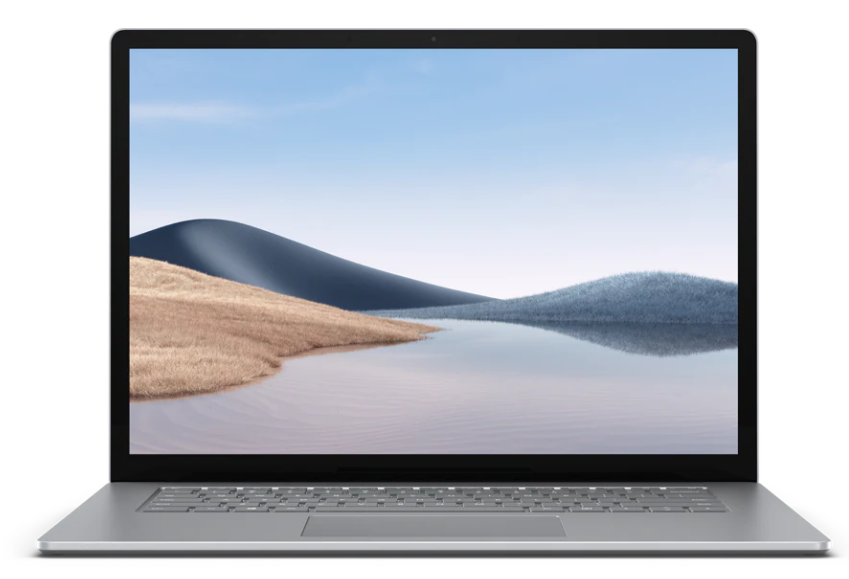
Microsoft Surface Laptop 4
The Surface Laptop 4 is a sleek and modern-looking laptop with high-end specs and a great display.
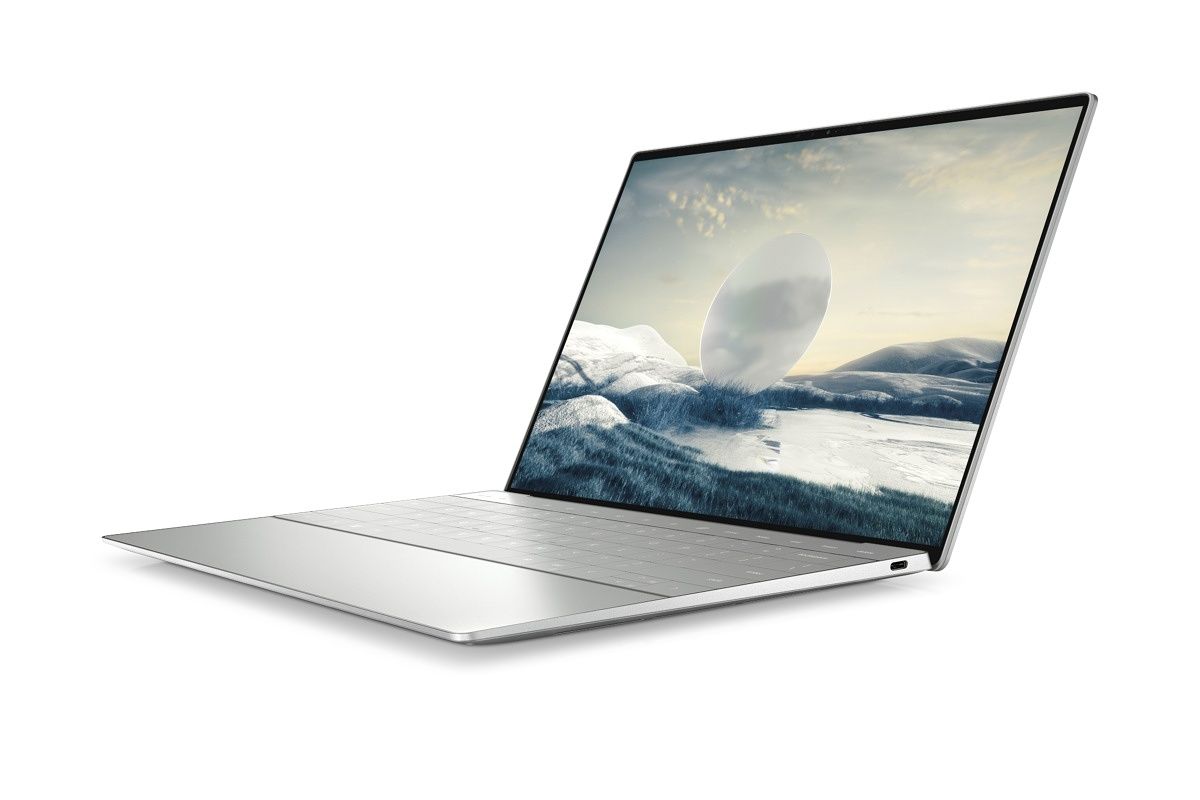
Dell XPS 13 Plus
The Dell XPS 13 Plus is a modern and powerful laptop with 12th-generation Intel P-series processors with a 28W TDP.

